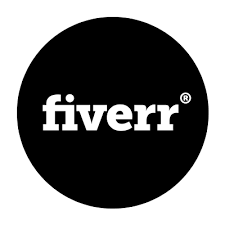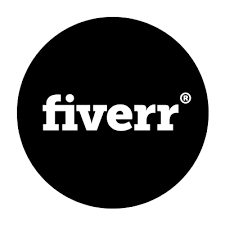Check out our interview with Constantine Anastasakis, director of business development at Fiverr, and hear about how they grew their marketplace.



Check out our interview with Constantine Anastasakis, director of business development at Fiverr, and hear about how they grew their marketplace.




Check out our interview with Constantine Anastasakis, director of business development at Fiverr, and hear about how they grew their marketplace.
Angela: Welcome to The Crowd, a podcast where we discuss the collaborative economy. I’m your host, Angela Baldwin.
Hi everyone. It’s Angela with Near Me. We’re so excited to have Fiverr on our podcast today. We have Constantine Anastasakis. He’s the Senior Director of Business Development at Fiverr. Constantine, thank you so much for joining us today.
Constantine: Oh, it’s a pleasure. Very happy to be here.
Angela: Great. So before we get started, I’d love to hear a little bit about your background and what brought you to Fiverr.
Constantine: Sure. So actually, I was a long-time Fiverr customer before I joined the company. When I joined, I was actually working at a small startup, under 10 people and we used Fiverr for our logo, for explainer videos, a lot of the classic use cases for Fiverr and just loved the platform. Eventually, that’s how I connected with some folks here and moved over to the Fiverr team.
Angela: Well, that’s awesome. So a lot of people have heard about Fiverr but there are those who haven’t. Can you tell us a little bit about how Fiverr works? When did they get started? And just a little bit of who they are.
Constantine: Sure. So Fiverr today is the world’s largest online marketplace for creative and professional services such as graphic design, copywriting, video editing, voice overs, really the types of marketing and branding services that a small business would need. I will give you a snapshot of the business. Today, Fiverr is among the most highly trafficked sites on the planet. Alexa ranks us around 450th in the world. So a ton of traffic, millions of buyers and sellers all around the world, completing over a million transactions a month which puts us in some rare company as far as online marketplaces are concerned. We’re growing bigger and faster all the time and currently at triple digit year over year growth. So we’re very satisfied with how quickly the business is growing. The company was founded in 2010. We just had our five-year anniversary this spring. We’re at a little over 200 employees with offices in Tel Aviv, New York, Chicago and Miami as well as some people scattered in different cities around the world. And we’re backed by some of the best investors in the world as well such as Bessemer and Accel. That’s what the business and organization looks like today.
Angela: That’s fantastic. So happy five-year anniversary. So as far as who Fiverr is today and where it’s been, was this the original intent or was there something else when it first got started?
Constantine: That’s an interesting question. And I cannot give you a first person perspective since I wasn’t in the business at that point. So I’m just going to give you my, this is my point of view as like I said a long-time Fiverr customer.
Angela: Yes.
Constantine: So over the past five years, Fiverr has really become go-to branding and marketing resource for small- and medium-sized businesses who either don’t have the in-house creative talent or the budget to retain an agency. That’s the core focus of Fiverr today. That’s a much more focused offering than what the marketplace launched with initially where it was really a much broader spectrum of services and less of a focus on small business needs. So that’s one way that I would describe the marketplace as having evolved since it was first founded.
Angela: Now that happens often with a lot of the marketplaces we talk to that maybe when you first got started, you sort of have an idea on your mind as far as who you are. And as you see what the industry needs, you start to mold it and adjust the demand. I know you weren’t there at the very beginning. But is there anything that you can say that you’ve seen or learned from that you wish maybe you guys had done differently along the way or – I’m sure not everything has gone smoothly.
Constantine: Yeah. So I would say we’ve so – it’s so obvious to people in this organization today that we’ve really started to hit our stride when it comes to speaking to small businesses and serving up, through our technology and through our community serving up the most relevant and the best quality services for their needs that I only wish that it had been like that on day 1 which is sort of an impossible dream that you start off that smoothly. That’s one of the things that perhaps we could’ve started even earlier and really focused on small businesses which were early adaptors but really focus on them as our core audience.
Angela: Definitely. And so as the Business Development Director, what does that look like? Are you part of building supply, demand? What does that entail?
Constantine: Sure. So that’s a very good question. Business development at Fiverr looks a little different than that of many other companies for instance. We don’t have a sales or account management function. We tend to focus on two main areas. One I would describe as more strategic function. So we initiate and own a lot of the strategic initiatives across the business and special projects. We perform a lot of the competitive intelligence and market analysis that business units across the company rely on when exploring new projects or products. We also have the Corp Dev function at Fiverr. Then we also have more operational responsibility. So we execute the partnership requirements of any product and marketing initiatives across the company. We also execute our local market strategy. So local market strategy for Fiverr is really all of the grassroots outreach that we do, a lot of the offline marketing, so radio, newspaper, direct mail. And then we also own the marketplace’s payment infrastructure, so how money comes in from buyers and how it gets paid out to sellers. So those are the main areas that we focus on.
Angela: That’s great. So as far as what you – you experienced Fiverr as a user and eventually was able to work on their team. I know you’ve seen where it’s been and what it’s doing now. But where do you say the business is going in the next five years? Are you familiar with – what are your dreams as far as how big is Fiverr going to become? I know you guys have already grown so quickly. But what do you imagine?
Constantine: Right. So our vision as a platform is to provide any digital service in a single click. That’s where we want to be. Over the next five years, I expect we’ll have grown horizontally. So we’ll have added more categories on top of the 150 plus that we offer today. We’ll have developed vertically. So, each of those categories will have a more tailored experience to the particular buyers and sellers of that type of service. In other words buying and selling translation services won’t look the same as buying and selling web development services. We’ve already made some great strides towards those category by category experiences today. But we’ll invest more on that. I imagine that on the supply side, the talent of our sellers will range from hobbyists and moonlighters to industry leading professionals. So we’ll have a wide range of quality sellers from the nonprofessional to the professional.
We’ll continue to invest in what our core competencies really are today which is not just building a community of buyers and sellers but really the technology that organizes them, so our search algorithms, our recommendation algorithms, how we package digital services in a traditional ecommerce layout. That’s really where we believe our strengths are as an organization. And over the next five years, I expect that we’ll have developed even more sophisticated, even more effective ways of serving out the very best, most relevant digital services to the right customers at the right point in their business’ life cycle. So that would be, that’s my take on where we are in five years.
Angela: I’d love to also hear a little bit about the peer-to-peer space. Now, obviously, peer-to-peer marketplaces, sharing economy, whatever you’d like to call it, are there other services that you use regularly or have tried that you’ve enjoyed? Do you see Fiverr as part of that community, that group when people think Airbnb, they think TaskRabbit, they think of those types? Or do you associate yourself with those? And which ones do you like to use in addition to Fiverr?
Constantine: So personally, I’m a big Uber user. So I rely on Uber. I travel a decent amount for work and I use Uber whenever I can. I mean, it’s always a big disappointment when I’m in a particular city that doesn’t have Uber. So I’m a big Uber user. In New York, I’ve also used Handy for house cleaning and laundry services and stuff like that and putting together furniture, that sort of services. Those are probably the two main ones that I use in my personal and professional life. And to the second part of your question, I absolutely would put Fiverr in the same category as the Ubers and Airbnbs of the world for one main reason. I mean, we could discuss it all day but the main reason that I see is like those companies, we make it, we remove a lot of the barriers that people have to making supplemental income. We make it very easy for someone to begin selling on Fiverr. We invest a lot of resources in developing those talents and helping them get more business, helping them become more effective on the platform, making sure that they’re achieving their full potential as a seller in our marketplace and that’s really –
When I speak to people who are hosts on Airbnb or drivers for Uber, what they tend to point out to me is that they rely on these platforms to very easily, very effortlessly put them in a position to make a meaningful amount of money. And on Fiverr, what we enable people to do is make money doing what they love. And that’s really another very important distinction that I would make about Fiverr compared to many of the other players in the sharing economy or collaborative consumption space is that on Fiverr we want to enable talented people to make money doing what they love. And that’s really very important for us.
And one of my favorite stories of a Fiverr seller is someone that we and the New York office know very well. She lives a couple of blocks from the office and comes by all the time. She is a voice over artist on Fiverr. She’s been with the platform for a couple of years. She is an aspiring actress and initially started selling voice overs on Fiverr to make ends meet while she pursued her dream of becoming an actress in between auditions. So whereas, 5 years ago, 10 years ago, she might have to take odd jobs to make ends meet while she was going on these auditions, on Fiverr, she was able to do something that was much more relevant to her vocation. She was able to sell voice acting services. And not only was she able to do that and make ends meet and more – so over two years, she’s made over $100,000 selling in Fiverr.
Angela: Wow.
Constantine: Not only was she able to support herself and more but now when she goes to auditions, she is bringing with her a portfolio of over 20,000 examples of paid voice acting gigs that she has done on Fiverr. So not only has Fiverr allowed her to pursue her dream, it’s actually made it more likely that she can achieve those goals by building a portfolio and getting all those gigs in with paying customers. So for me, that’s a very, that really captures what the value is of Fiverr to the individuals that sell their services on the platform. It’s not just about making money but it’s about doing what you love, getting better at doing what love and being able to spend more of your time focused on that.
Angela: Definitely. What I like about what Fiverr is doing is that you’re part of the sharing, peer-to-peer economy space but you’re also technically a marketplace that helps other people who are also in the space. For example, I think of the entrepreneurs who are listening right now who want to build their own marketplace and I often get approached with how do I do social media or create these designs or work on this part of my business, marketing, whatever it might be. And somebody can go on Fiverr and go hire somebody, get that service there. And so it’s sort of this cycle of really being a marketplace and also servicing those who are also in the same space. I don’t know, it’s kind of a great idea. I think our listeners are definitely going to benefit from being introduced to you if they’re not introduced to you already. But one question I do want to ask about the industry is you talked about sharing and peer to peer and where you guys are positioned in it but where do you see overall this space going? I know people talk about on demand, people taking about the different food, sharing, peer-to-peer services. What do you think is next or what should be next?
Constantine: Yeah. So that’s a really, I think that’s a really important question especially we’re coming up on a presidential election year and already it’s been a topic of discussion by most of the leading presidential candidates which is – it’s kind of surreal at times to hear, to realize what a hot topic the sharing economy has become with really passionate supporters on one side and then skeptics on the other. And one thing that I feel as a consumer, as a seller on Fiverr and as an employee of this company is that marketplaces like Fiverr or collaborative consumption platforms such as Fiverr and Airbnb, etc, what we’re doing is more than helping people make some money on the side and it’s more than just providing some value and convenience to the buyers and customers on these platforms. We’re really expanding the size of the opportunity for everyone.
When I think about the people that sell on Fiverr especially the ones that do it for a secondary source of income, if they were looking for that second job like I said 5 years ago or 10 years ago, their options would be really limited. And with platforms like Fiverr and some of those other companies that we’ve discussed, suddenly they have many more options to make some real amount of money, money that would have a real impact on their lifestyle and their quality of life. And I hope that we don’t find ourselves in a situation where too many restrictions are placed on these marketplaces, on these platforms and we end up eliminating these opportunities for those people that we’re trying to help make money.
Angela: Yes.
Constantine: So, that’s one thing that – like I said, I’m looking at this as a consumer, a seller and an employee. That’s something that I feel would be a terrible waste of talent and opportunity if we started limiting or narrowing the opportunities that people have today to leverage these platforms and make money.
Angela: Definitely. So, as far as peer-to-peer marketplaces are concerned and being involved in the business development side of things, what is one piece of advice that you would give to somebody who is starting their own peer-to-peer marketplace? We do have a lot of entrepreneurs who are building whether it be sharing of outdoor gear or RV sharing or whatever it can be. What would you say is one tip or advice?
Constantine: I would say you want to build supply. You want to focus on building your supply. In my point of view, that’s the best way to get the wheel turning and start building some liquidity. That’s obviously the biggest challenge for any of these marketplaces. It’s building that initial liquidity. By the time I joined Fiverr, we had long since achieved liquidity but it is something that I know most young marketplaces really struggle with. And they struggle with where they should invest their time and resources and energy, whether it’s on the demand side or the supply side. So, my point of view on it is invest it in the supply side, really understand who these suppliers are, start collecting meta data around their offering very quickly so that you can begin recommending the right supplier to the right customer. And that’s something that we’ve invested a lot of resources in at Fiverr. It’s making sure that our search and our recommendation algorithms are really sophisticated, really robust.
You don’t need that from day 1 but you’ll set yourself up for success if you went building your supply, you take the time to really understand who these people are, what they’re offering is and investing resources and making sure that you’re giving your customers the most relevant service or product. And that’s how you’ll give yourself a better chance at building a business with really high retention rates, building a business where there’s enough deal flow to keep a lot of sellers or service providers engaged and making sure that you’re adding enough value to the lives of your customers that they rely on your marketplace on a regular basis and not just the one off purchase. So, that would be my much easier said than done advice for someone beginning a marketplace.
Angela: Great advice there. One thing I love for you to share to everyone is, what’s next for Fiverr? What do you guys have in mind? Any special events, anything coming up soon that we need to know about? And then also just where they can find you. Are you guys active on Twitter? And also for yourself, I mean, people want to follow what you’re doing. Please share your info there.
Constantine: Okay. So, I’ll answer the first part of that question. What’s next for Fiverr? We have teams across the organization working on really amazing products. So, I won’t even begin to get into what they’re producing. I’ll just focus on what’s coming out of the biz dev team. A large area of focus for us have been third party integrations that allow our sellers and our buyers to get access to products and services that they may not have access to before. So, one of our most recent integrations was with Getty Images. It allows our sellers to offer in their gig Getty Image, Getty visual content. It allows our buyers to purchase Getty content at unbeatable prices, at the lowest prices on the internet. And it achieves the three main things that we look for in any partnership, any integration. We want to make sure that we’re adding real value and real convenience for our buyers. So, in this case, they don’t have to go and get their own image. They can get access to a premium catalog of Getty content at like I said unbeatable value.
And then the third part of it is we allow the sellers to expand their offering and make more money. So, in this case, not only does the seller no longer need to have his own subscription to a stock photo site, he now gets access to the best library of content that he could, that exists. And he’s able to actually make money off of using this content. So, it’s no longer an overhead cost for him as it might be if he was selling off of Fiverr. Not only is it no longer an overhead cost, it’s actually a way that he’s able to make more money for finding, for providing a graphic design service. So, we had – that’s live today. That’s something that came out over the summer. That’s live today. We have a couple more really exciting similar integrations coming out over the next month to two months.
Angela: That’s great.
Constantine: Yeah. And we’re really excited. It really accomplishes again those value and convenience for the buyer and expanding the seller’s offering. It accomplishes those things. And it’s also really cool to think about all the ways that Fiverr can plug in premium products and services into our marketplace and become more of that go-to resource for small- and medium-sized businesses and their marketing and branding needs.
Angela: Definitely. That’s awesome. So, we’re really excited about what Fiverr is up to and I’m sure those listening are. So, where can we find you? I know its fiverr.com. What about your Twitter or what about yourself? Do you have a personal Twitter that you want to shout out for everyone to take a look at?
Constantine: Sure. So, the Fiverr Twitter account is @fiverr. The website, you gave. We have Instagram and Facebook accounts. You can also follow us there. And we actually have three mobile apps. We have Fiverr for IOS, Fiverr for Android and then we also have a mobile app that’s dedicated to just one of our more popular and fun categories which is our cartoon and caricature category. It’s called Fiverr Faces. So, you can take that selfie of yourself and have one of our graphic designers creates an awesome caricature. So, those three mobile apps are out in the market today. For myself, personally, I welcome anyone who wants to reach out to me to talk about marketplaces or anything else. You can find me easily on LinkedIn. I’m a huge content consumer on Twitter but I don’t really add anything to the mix there. But I’m happy for people to ping me on LinkedIn and we can chat.
Angela: Fantastic. Well, thank you, Constantine, for taking the time today and answering our questions and we’ll keep in touch. And thank you so much for joining the podcast.
Constantine: Thank you for having me.
Angela: Thanks for listening to today’s episode of the Crowd. We encourage you to rate us on iTunes, follow us on Twitter @NearMeCo and explore our blog at blog.near-me.com. The Crowd is brought to you by Near Me. If you like to build a peer-to-peer marketplace, visit near-me.com to learn how to make that dream a reality.
Ensure your project’s success with the power of platformOS.